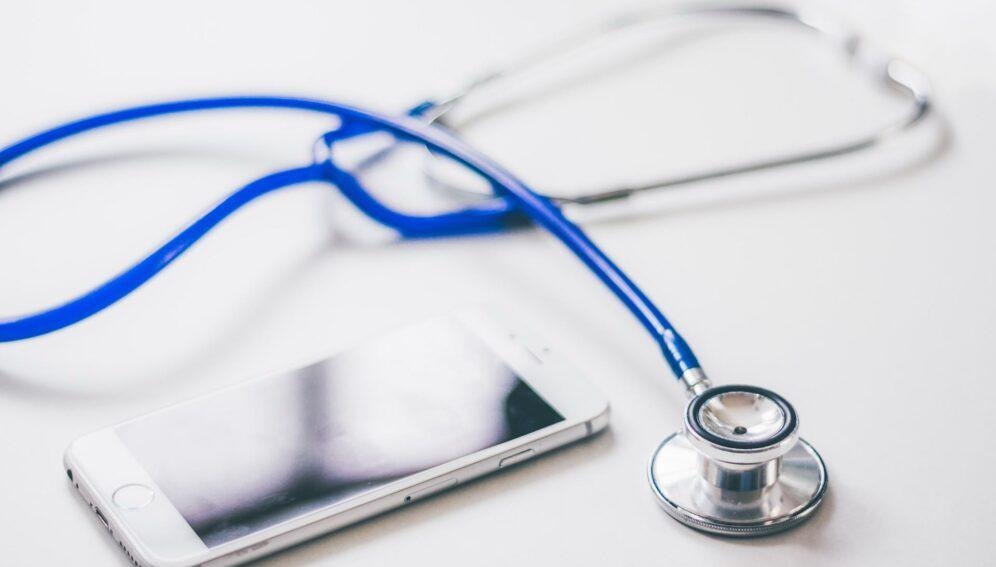According to Australian scientists, a nanotech imaging device small enough to fit on a smartphone camera lens can make the detection of some diseases accessible and inexpensive for individuals in rural and isolated areas.
 A nanotech imaging device, tiny enough to fit on a smartphone camera lens, has the potential to make the diagnosis of certain diseases accessible and affordable for people. Image Credit: StockSnap from Pixabay.
A nanotech imaging device, tiny enough to fit on a smartphone camera lens, has the potential to make the diagnosis of certain diseases accessible and affordable for people. Image Credit: StockSnap from Pixabay.
The COVID-19 pandemic has pushed diagnostics into our focus, and the World Health Organization has urged countries to make quality diagnostics a priority as the first phase in disease control, treatment and prevention.
The gadget was described in the journal ACS Photonics by researchers from the University of Melbourne and the Australian Research Council Centre of Excellence for Transformative Meta-Optical Systems (TMOS).
Optical microscopes are being used to analyze changes in biological cells to diagnose diseases.
It usually involves staining the cells with chemicals in a laboratory environment and utilizing high-end microscopes, which are bulky and expensive.
Lukas Wesemann, Study Lead Author and Research Fellow, University Of Melbourne
Wesemann was also a research fellow at the TMOS.
The scientists used metasurfaces to miniaturize phase-imaging technology, which can modify light traveling through them to reveal previously unseen characteristics of objects, such as live biological cells. Phase imaging makes use of different levels of transparency in the tissues or cells being studied.
Our flat optical device that is only a few hundred nanometers thick can perform the same kind of microscopy technique that is used a lot in the investigation of biological cells. It can be integrated on top of a camera lens to help detect changes in biological cells that are indicative of diseases.
Lukas Wesemann, Study Lead Author and Research Fellow, University Of Melbourne
Malaria, leishmaniasis, trypanosomiasis, and babesiosis are all diseases that can be identified with optical microscopy and could be identified with this technology in the coming years.
“The benefit of being able to visualize cells with this kind of device is the fact that they can be alive and they don’t need to be processed in any way before they can be visualized. It is real-time and requires no computational processing. The device does all the work,” says Ann Roberts, co-author of the study, TMOS chief investigator, and professor at the University of Melbourne.
This innovative gadget could make at-home disease diagnosis possible, in addition to permitting remote medical diagnostics. Patients could collect their samples, such as saliva or a drop of blood, and send the picture to a laboratory anywhere in the world for evaluation and diagnosis.
Early diagnosis could make timely treatment possible and can lead to better health outcomes. Making medical diagnostic devices smaller, cheaper and more portable will help disadvantaged regions gain access to healthcare that is currently only available to first world countries.
Ann Roberts, Study Co-Author and Chief Investigator, Australian Research Council Centre of Excellence for Transformative Meta-Optical Systems
Since it is created with equipment that is also used to make electrical computer chips, the current gadget prototype has a fabrication cost of around $700. The researchers claim they are seeking a business partner to help them commercialize the device.
“We’re confident that in the near future we can produce fabrication methods that are more suitable for mass fabrication and bring the device cost down to potentially a few cents,” Wesemann tells SciDev.Net.
“It is a very fundamental technique that any engineer could pick up and integrate into any mobile medical imaging device, it doesn’t even have to be a smartphone,” Wesemann added.
Michael Abramoff, ophthalmologist, computer engineer and founder and executive chairman of US-based Digital Diagnostics company, conveys SciDev.Net, “This is a new imaging modality, and the feasibility of such optical phase imaging using incident light is promising, as there are many almost transparent tissues that are hard to image without contrast or radiation.”
“We look forward to the application of this modality to biological tissue, and especially the retina, as it is there where neural and vascular tissue can be imaged simultaneously.”
Journal Reference:
Wesemann, L., et al. (2022) Real-Time Phase Imaging with an Asymmetric Transfer Function Metasurface. ACS Photonics. doi.org/10.1021/acsphotonics.2c00346.